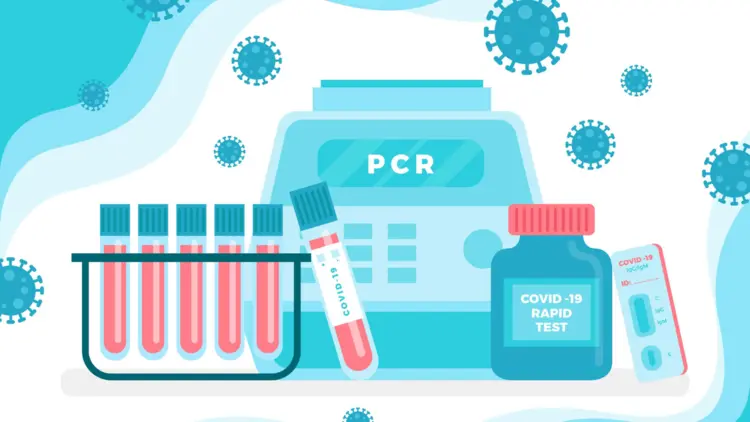Polymerase Chain Reaction (PCR) kits are well known in their genetic application of multiplying DNA sequences, and have far developed beyond their genetic use. Recent developments offer the possibility of sensitive, high-throughput protein functional analysis, including measurements of protein expression and post-translational modifications.
Proteins themselves are not directly amplified using PCR kits, but rather the processes of binding and modification to proteins are used to create DNA-binding/modification events that can then be amplified.
We will look into more detail at how kit PCR verifies protein functionality, with particular regard to real-time PCR, aptamer-based assays, and proximity ligation approaches, and their combination with antibody technologies.
Approaches to PCR Kits W.r.t Proteins
There are 2 major approaches to PCR kits with respect to protein functionality:
01. Antibody-Oligonucleotide Conjugates (Proximity Ligation Assay)
In proximity ligation assays (PLA), antibodies are labeled with oligonucleotide probes depending on the targets. They are antibodies that interact and attach to the unique epitopes of proteins.
When two probes come together due to their proximity in the presence of a target protein, a third oligonucleotide spacer can bind their termini, and a DNA ligase can seal them together, forming one amplifiable DNA molecule. This template is subsequently quantified by real-time PCR, which translates the protein amount or activity into a quantifiable nucleic acid output.
Workflow Overview
Cell lysates are allowed to react with two pools of oligonucleotide-antibody conjugates.
- Binding: Antibodies recognize different epitopes on the protein.
- Ligation: A bridge oligonucleotide is attached to the two oligos that bring the bridge into proximity only in the presence of a protein.
- Amplification: The ligated DNA is used as the template in the real-time PCR.
02. Conformation-Switching Aptamers
Aptamers are man-made sequences of nucleic acids that bind a particular protein. In kit PCR, conformational-switching aptamers switch structure on the binding protein. This structural change allows ligation of the oligonucleotide substrate, and this forms a template of the real-time polymerase chain reaction.
These delta Ct values are useful measures of protein concentration with the capability to correlate with functional status in the PCR technique.
Example: four-point detection of thrombin and PDGF
| NOTE: The Ct value change in PCR is physically represented by the degree or amount of protein binding/activity. |
Beyond Expression- Functionality, Modification, and Validation
Let’s understand the mechanism of PCR kits beyond expression:
Expression of Protein in Small Samples
Kit PCR makes it possible to compare the amounts of proteins in limited amounts of material, including stem cells and tumor biopsies, where other methods of assaying protein levels are impractical.
This is essential when doing the research on rare cell populations.
Pull-Down to Identify Post-Translational Modification
Surface modifications such as phosphorylation may be detected and characterized by the use of kit PCR procedures, which provide direct information on protein activation states and regulation.
DNA Transfection and Functional Assay
PCR kits can be used to validate the gene editing/transfection based on the functionality and expression of the end-products, i.e., the proteins, as opposed to quantifying the mRNA.
RNA-Protein Correlating Data
Complementary PCR studies of mRNA/miRNA and protein provide a more functional context to gene regulation and protein action, essential to systems biology.
What Kit PCR Can Do That Benefits Traditional Protein Assays?
- Sensitivity: Sensitive enough to detect proteins with very low concentrations, which is much lower than that detected in ELISA or Western blot.
- Specificity: Aptamers and antibodies can function to provide specific detection even in complex cell lysates.
- Quantitation: Real-time PCR delivers quantitative delta Ct, which yields more robust results on protein abundance and/or change.
Technical And Data Interpretation
One major application of the kit PCR is its use in data interpretation. Ligation-based PCR templates give low background, and their signal-to-noise ratios are high.
Their measurement proves the potential to serve as a digital reporter of functional protein levels because an increase in Ct values is observed in the presence of functional target proteins.
The design of aptamers and antibody-oligo conjugates is versatile and allows tailor-made kit PCR assays to new research requirements.
Conclusion
The field of protein functionality analysis is at the threshold of kit PCR. Using molecular engineering, notably antibody-oligonucleotide conjugates and conformationally responsive aptamers, now allows researchers to quantify and characterize the movements, modifications, and activities of proteins in real time with unparalleled levels of control and specificity.
This migration of nucleic acid amplification into direct protein analysis not only extends the versatility challenge due to the use of the PCR kit, but also improves the sensitivity and specificity of biomedical research-based experiments.
